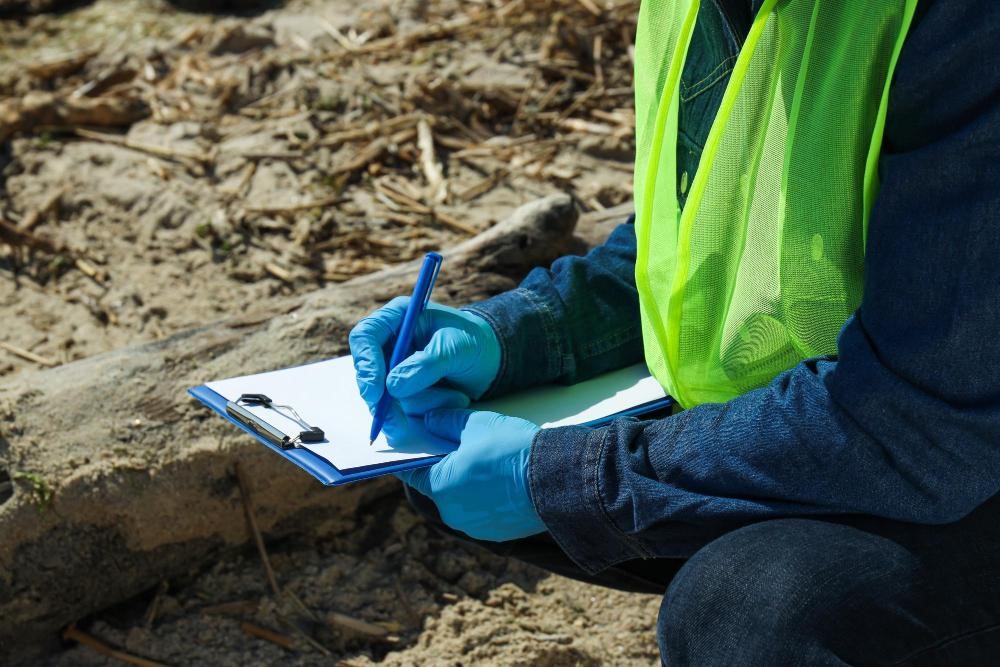Every structure stands on a foundation, but what supports that foundation? The soil. It might look the same everywhere, but its properties vary significantly. Ignoring soil testing for construction can lead to disastrous outcomes—foundation failure, cracks, or even structural collapse. Whether building a home, an office, or a skyscraper, understanding the soil beneath is the first step toward durability and safety.
The Role of Soil Testing in Construction
Soil isn’t just dirt; it’s a mix of minerals, organic matter, moisture, and air, and its composition affects everything from load-bearing capacity to drainage. That’s why soil testing is important—it determines whether the ground can support the structure, identifies potential risks, and ensures long-term stability.
Skipping soil analysis might seem like a shortcut, but it often leads to costly repairs later. From weak foundations to waterlogging, poor soil conditions can cause a range of issues that compromise the integrity of a building.
Advantages of Soil Testing Before Construction
1. Prevents Structural Failures
Every soil type reacts differently to load, moisture, and pressure. Soil testing for construction identifies properties like strength, density, and moisture content. If the soil isn’t suitable, engineers can modify the foundation design accordingly, preventing future structural failures.
2. Helps in Selecting the Right Foundation
One of the biggest advantages of soil testing is that it helps determine the best foundation type. Some soils support shallow foundations, while others require deep foundations like piles or piers. A strong foundation ensures the building remains stable over time.
3. Identifies Soil Contaminants
Toxic substances, heavy metals, or excessive organic material in the soil can impact construction materials and even pose health risks. Soil testing methods for construction detect contaminants, allowing for necessary treatments or replacements.
4. Prevents Water-Related Issues
Soil with poor drainage can lead to water pooling, foundation weakening, or erosion. Testing reveals how the soil absorbs and retains water, ensuring proper drainage solutions are implemented during construction.
5. Saves Costs in the Long Run
While soil testing might seem like an additional expense, it prevents costly repairs and foundation reinforcements later. Addressing soil issues before construction begins is far more economical than fixing a sinking or cracking building.
Also know the Step-by-Step Guide to the Home Building Process: Simplified and Explained – Ghareka
Key Soil Testing Methods for Construction
Soil testing isn’t a one-size-fits-all process. Different tests analyze different aspects of soil behavior. Here are some essential soil testing methods for construction:
1. Moisture Content Test
Soil moisture affects stability. Excess water can weaken the foundation, while too little can lead to cracking. This test measures how much water the soil holds and helps in designing appropriate drainage solutions.
2. Standard Penetration Test (SPT)
This method assesses soil strength by driving a sampler into the ground and counting the number of blows required to reach a certain depth. It’s a critical test for determining foundation requirements.
3. Atterberg Limits Test
Used for clayey soils, this test determines how soil reacts under different moisture conditions. It helps engineers understand shrinkage, plasticity, and swelling potential.
4. Compaction Test
This test measures how well soil can be compacted to support a structure. Properly compacted soil increases load-bearing capacity and reduces settlement risks.
5. Permeability Test
Water movement through soil is crucial for preventing drainage issues. This test evaluates how quickly water passes through the soil and helps in designing appropriate waterproofing and drainage systems.
How Soil Testing Influences Construction Decisions
- Choosing the Right Construction Materials: If the soil has high moisture retention, using moisture-resistant materials becomes essential.
- Designing Effective Drainage Systems: Poor drainage leads to water damage, mold growth, and weakening of structural elements.
- Foundation Reinforcement: If the soil is weak, additional reinforcement such as deep foundations or soil stabilization techniques may be needed.
Bringing Expert Guidance to Your Construction Project
Soil testing is just the first step in building a strong and lasting home. When it comes to turning those test results into a successful construction plan, expertise matters. GharEka, a trusted home construction company in Kolkata and a venture by the Shyam Steel Group, ensures that every stage of construction is handled with precision. From designing house plans to managing sanction processes and executing construction, we simplify the home-building journey. Our mobile app provides real-time updates, giving homeowners complete transparency and control over our project.
Check this out: In residential house construction, Why is GharEka being chosen as the best?
Final Thoughts
Skipping soil testing for construction is like ignoring the foundation of a building—risky and expensive in the long run. Understanding why soil testing is important helps in making informed decisions that prevent future complications. Whether choosing the right foundation, avoiding water issues, or ensuring safety, the advantages of soil testing far outweigh the costs. Implementing proper soil testing methods for construction ensures that every building stands strong for generations. Would you take the risk of building on uncertain ground? Conduct soil testing before construction—it’s a small step with massive benefits.

